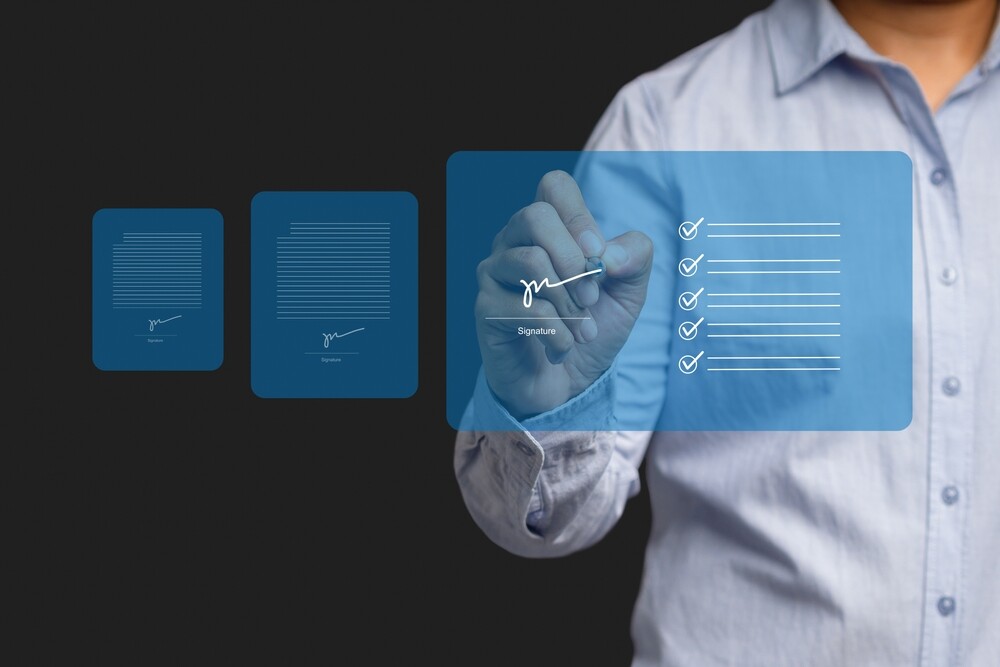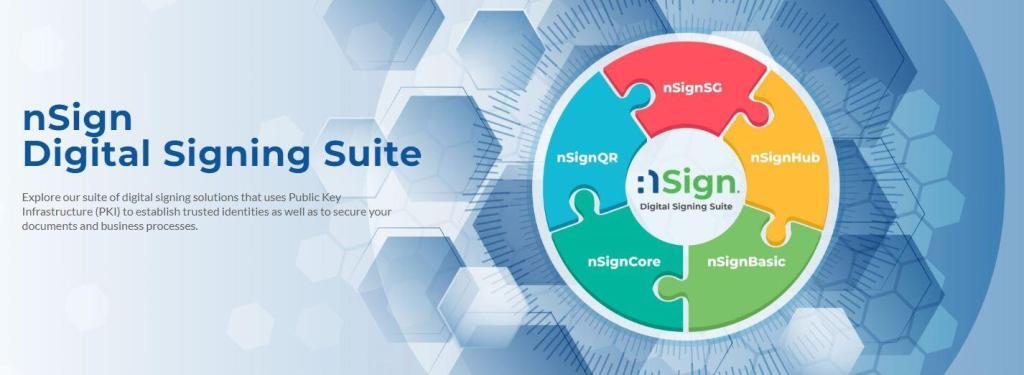Did you know that Digital Signatures was first implemented in 1988? It implemented the RSA cryptographic algorithm, which is still being developed and used today. Even so, not too long ago, the corporate world was still using rubber stamps and wet ink signatures to legalise documents. They would even share the authorisation process by sharing the physical stamp with their employees, or authorise the use of the company logo or seal.
With the utilization of rubber stamps declining, companies began using electronic signatures. However this still only utilised an image of an authorised person’s signature. It is commonly presumed that the person who signed has personally verified with the use of the signature image. So, how did they deal with authenticating signatures in the days of yore?

Let us revisit the history of the technology chronologically.
- 1976: Whitfield Diffie and Martin Hellman first proposed the idea of a digital signature scheme, but no prototype was developed yet
- 1977: Ronald Rivest, Adi Shamir and Len Adleman devised the RSA algorithm for digital certificates
- 1988: Lotus Notes 1.0 was launched and used the RSA algorithm
- 1998: The Electronic Signatures Act in Singapore was established to provide a legal foundation for electronic transactions
- 1999: The ability to embed digital signatures into documents is added to PDF format
- 2000: The Electronic Signatures in Global and National Commerce Act (ESIGN) was enacted in the United States, establishing the legal framework for electronic signatures and records, enabling recognition and legitimacy in both domestic and international commerce.
- 2008: The PDF file format becomes an open standard to the International Organization for Standardization (ISO) as ISO 32000. Includes digital signatures as an integral part of the format
- 2010 onwards: Digital signatures continued to play a significant role in secure online communication, document authentication, and electronic transactions. The technology has evolved further to improve accessibility and ease of use. Some of the improvements are:
- Digital signatures were widely adopted in various sectors, including government, finance, healthcare, and legal. They provided a means of ensuring the authenticity and integrity of digital documents and messages.
- Digital signature algorithms evolved to include more secure and efficient cryptographic methods. RSA, DSA, and ECDSA (Elliptic Curve Digital Signature Algorithm) were commonly used algorithms
- Mobile and Cloud Integration: With the proliferation of smartphones and cloud services, digital signatures have become more accessible. People could sign documents and contracts on mobile devices and store digital signatures in the cloud for easy retrieval.
- User-Friendly Interfaces: User interfaces for digital signature solutions became more intuitive, allowing individuals and organizations to adopt them without requiring advanced technical knowledge.
 Using a digital signature offers significant advantages and is widely adopted. Firstly, the identity of the signer undergoes verification, establishing a trust foundation in digital interactions. This process is strengthened by the sole possession of the private key linked to the digital certificate in use, restricting access exclusively to the authorized signer. Nonrepudiation, a crucial principle, ensures that neither party can deny involvement in sending or receiving a message, thanks to the protective measures of encryption and digital signatures. Additionally, the integrity of transmitted information is preserved, as any attempt at tampering renders the digital signature invalid, thereby safeguarding the authenticity of the data.
Using a digital signature offers significant advantages and is widely adopted. Firstly, the identity of the signer undergoes verification, establishing a trust foundation in digital interactions. This process is strengthened by the sole possession of the private key linked to the digital certificate in use, restricting access exclusively to the authorized signer. Nonrepudiation, a crucial principle, ensures that neither party can deny involvement in sending or receiving a message, thanks to the protective measures of encryption and digital signatures. Additionally, the integrity of transmitted information is preserved, as any attempt at tampering renders the digital signature invalid, thereby safeguarding the authenticity of the data.
Today, it is evident that the COVID-19 pandemic has made a profound impact on the way we conduct business in the office, fundamentally transforming and even accelerating the process of digitization. As the pandemic forced employees to adapt to remote work out of necessity, one of the key aspects that quickly gained significance in this new landscape was the use of digital signatures in various work processes. This shift was not merely a matter of convenience but a vital adaptation to ensure the continuity of essential business operations. In this context, those who clung to the traditional practice of using images of wet ink signatures encountered numerous legality issues.

Digital signatures, unlike their paper counterparts, offer several advantages in a remote work setting. They are secure, tamper-evident, and easily verifiable. They also provide a digital trail that records who signed a document and when enhancing transparency and audibility. Moreover, digital signatures are typically legally recognized in many jurisdictions, enabling organizations to maintain compliance and meet legal requirements even in a remote work environment. Although many organizations recognize the necessity to accelerate the adoption of digital signatures for document signing, implementing this change may prove challenging due to the persistence of traditional signing methods. Some remain hesitant to rapidly overhaul established practices.
Over the last few years, Netrust has successfully addressed the increasing need for enhanced digital signing solutions in response to the surge in remote work demands. To assist users in this transition, we’ve provided easily accessible video tutorials available on our website, check out the tutorial here. Additionally, we’ve organized comprehensive online seminars via Zoom, designed to educate entire organizations on the seamless integration of digital signing methods into their day-to-day business operations.
To find out more or to embark on digital signing for your organization, reach out to us today >>> https://www.netrust.net/contact-us/
Follow us on LinkedIn for the latest happenings/updates.



